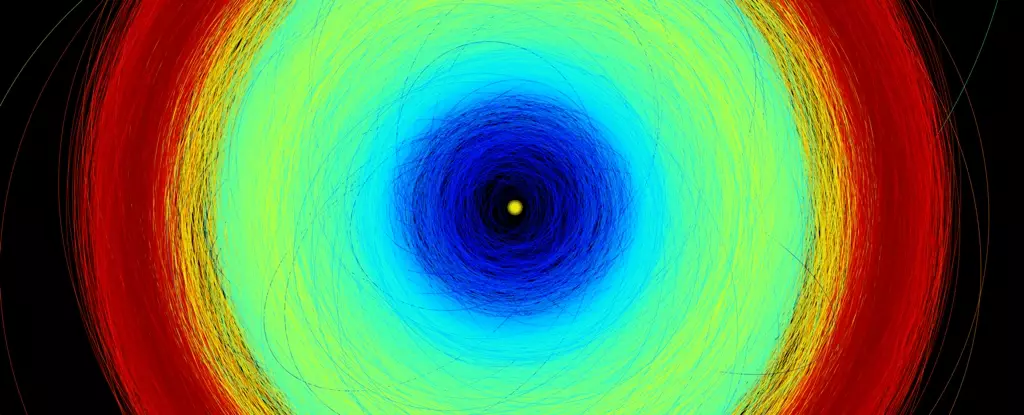The Gaia mission, known for its mission to chart stars in the Milky Way Galaxy, has made remarkable strides as an asteroid hunter as well. In a recent study, astronomers reported the success of spotting more moons of asteroids in our solar system based on Gaia data release 3. This new observation will add 352 more binary asteroids to the known count, nearly doubling the number of asteroids with moons. The spacecraft’s precise sweeps of the sky have uncovered possible moons around at least 350 asteroids, making them binary systems. These findings have revealed that the collection of asteroids in our solar system is far more complex than previously thought.
Astrometry, the precise study of the positions of objects in space, is often considered a less exciting branch of astronomy compared to finding new comets or charting galaxies. However, it plays a crucial role in detecting objects like planets around stars that are challenging to identify through imaging techniques. By measuring minute shifts in positions of stars using precise astrometric measurements, scientists can also detect similar shifts in asteroids’ positions. Thanks to Gaia’s astrometric abilities, researchers have been able to identify binary asteroids and study their characteristics, expanding our understanding of the solar system’s diverse objects.
The Solar System consists of various objects, including one star, multiple planets, moons, rings, comets, and asteroids. Asteroids and comets, often considered as remnants of planet formation, provide valuable information about the conditions in the original nebula where the Solar System originated. Gaia’s measurements have highlighted the prevalence of binary asteroids, shedding light on the interactions and formations of these objects. By categorizing asteroids into families based on their orbits and properties, scientists can better understand the dynamics of these rocky and icy bodies throughout the solar system.
The discovery of more binary asteroids through the Gaia mission has opened up new avenues for studying these intriguing objects. By performing precise astrometric measurements and analyzing their compositions, scientists aim to unravel the mysteries surrounding the formation and evolution of binary asteroids. Various theories on the origins of binary asteroids are currently being explored, including the idea of rubble piles forming after catastrophic events or asteroids emerging from the breakup of larger bodies. Continued observations and data collection from missions like Gaia are crucial for advancing our knowledge of these celestial phenomena.
The Gaia mission’s exploration of asteroids and their moons has provided valuable insights into the diverse population of objects in our solar system. By leveraging astrometric measurements and advanced technologies, astronomers are uncovering new discoveries and deepening our understanding of binary asteroids. As research continues and new data is gathered, we can expect to gain further insights into the origins, formations, and interactions of these fascinating celestial bodies. The study of asteroids and their moons, once considered a mundane task, has evolved into a captivating field of astronomy that holds the key to unlocking the mysteries of our solar system.



Leave a Reply